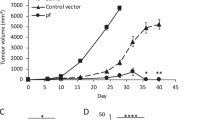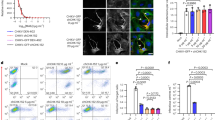Abstract
INFECTION of mice with viruses can generate cytotoxic T lymphocytes (CTL) which show restricted specificity for target cell lysis. Specific lysis requires that the virus used to prime the target cells must be of the same type as that used to sensitise the CTL, and that both target and CTL cells must express the same major histocompatability complex (MHC) gene product(s). The nature of the viral gene product(s) and their interaction with the MHC gene product(s) have been the subject of recent stud1–5. Previously we used Sendai virus to show that lysable target cells can be obtained using membrane vesicles which contain only the viral glycoproteins, indicating that these may be the specific viral gene products involved in target formation5. Sendai virus contains two glycoproteins—the haemagglutinin-neuraminidase (HANA) which promotes attachment of virus to cells and the fusion protein (F) which is involved in subsequent virus cell fusion7–9. Both activities are necessary for insertion of these viral glycoproteins into the plasma membrane of the cell10. In this letter we suggest that the insertion of the viral glycoproteins into the cell membrane is an essential step in target cell formation since we can show that virus containing an inactive fusion protein precursor (F0) cannot elicit T cell cytotoxicity unless the fusion activity is generated by proteolytic cleavage of the precursor. Sugamura et al.6 have suggested that it is primarily the F glycoprotein of the Sendai virus envelope which is essential for the formation of the target antigen, as virus lacking the functional activities of F following trypsin digestion was inactive in priming target cells for T cell killing. However, we show that proteolytic inactivation of either of the two glycoproteins (F or HANA) of virus used to prime target cells will abolish the cytotoxic response.
This is a preview of subscription content, access via your institution
Access options
Subscribe to this journal
Receive 51 print issues and online access
$199.00 per year
only $3.90 per issue
Buy this article
- Purchase on Springer Link
- Instant access to full article PDF
Prices may be subject to local taxes which are calculated during checkout
Similar content being viewed by others
References
Zinkernagel, R. M. & Doherty, P. C. Nature 248, 701–702 (1974).
Munro, A. & Bright, S. Nature 264, 145–152 (1976).
Schrader, J. W. & Edelman, G. M. J. exp Med. 145, 523–539 (1977).
Koszinowski, U. & Thomssen, R. Eur. J. Immun. 5, 245–251 (1975).
Koszinowski, U., Gething, M. J. & Waterfield, M. Nature 267, 160–163 (1977).
Sugamura, K., Shimizu, K., Zarling, D. A. & Bach, F. G. Nature 270, 251–253 (1977).
Tozawa, H., Watanabe, M. & Ishida, N. Virology 55, 242–253 (1973).
Homma, M. & Ouchi, M. J. Virol. 12, 1457–1465 (1973).
Scheid, A. & Choppin, P. W. Virology 57, 475–490 (1974).
Hosaka, Y., and Shimizu, K. in Virus Infection and the Cell Surface (eds Poste, G. & Nicolson, G. E.) 129–155 (North-Holland, Amsterdam, 1977).
Author information
Authors and Affiliations
Rights and permissions
About this article
Cite this article
GETHING, MJ., KOSZINOWSKI, U. & WATERFIELD, M. Fusion of Sendai virus with the target cell membrane is required for T cell cytotoxicity. Nature 274, 689–691 (1978). https://doi.org/10.1038/274689a0
Received:
Accepted:
Issue Date:
DOI: https://doi.org/10.1038/274689a0
This article is cited by
Comments
By submitting a comment you agree to abide by our Terms and Community Guidelines. If you find something abusive or that does not comply with our terms or guidelines please flag it as inappropriate.



